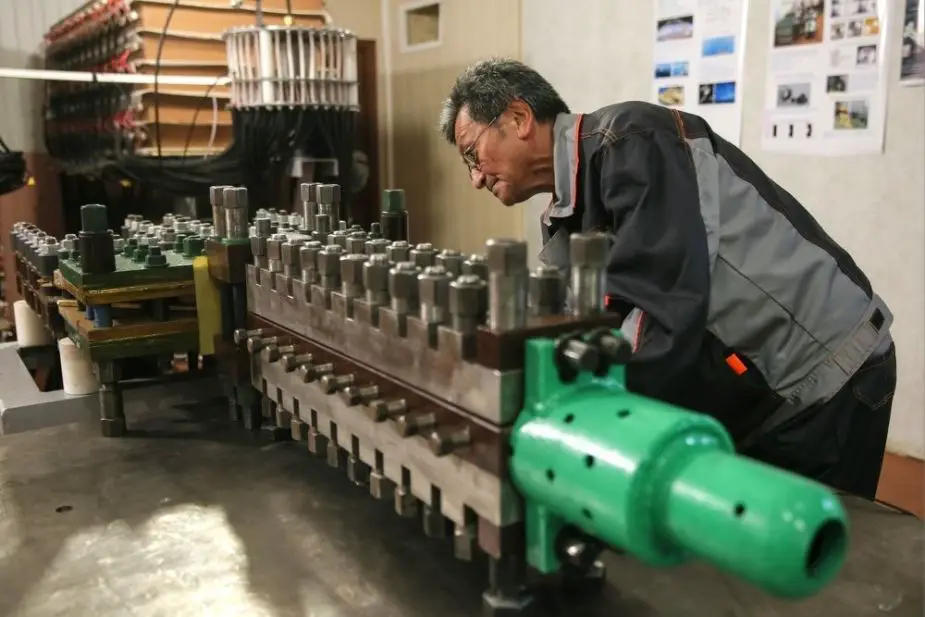Breaking news
Russia continues R&D work on electromagnetic railgun.
Russian scientists succeeded to manage technologies that would arm the troops with electromagnetic rail guns. The United Institute of High Temperatures of the Russian Academy of Sciences found a way to increase the power of the electromagnetic gun six times. The electromagnetic field accelerates the projectiles to close to space speed. Even a small object carries high destructive power. Experts believe the research of the institute can be used to create weapons in future, the Izvestia daily reported.
 The railguns are expected to become electromagnetic artillery of the future. Installed on warships they can fire at targets at a distance of 300-400 km and even destroy objects in the near-Earth orbit. In July 2016, a team of Russian scientists has successfully tested the country's first railgun. (Pictured here, source TASS)
The railguns are expected to become electromagnetic artillery of the future. Installed on warships they can fire at targets at a distance of 300-400 km and even destroy objects in the near-Earth orbit. In July 2016, a team of Russian scientists has successfully tested the country's first railgun. (Pictured here, source TASS)
Laboratory head of the Shatura affiliate of the institute Vladimir Polishchuk told the newspaper that engineers succeeded to design and build a new capacitive storage. It can accelerate objects weighing 100 gram to a speed over 3 km/s.
"In two years the power loading in Shatura increased six-fold - from 0.8 megajoule to 4.8," Polishchuk said.
Experiments with a railgun powered by pulsed inductive energy storage have been prepared. "Such an electric power scheme provides rapid energy introduction into plasma which increases the temperature of the plasma piston and consequently the speed," he said.
The Shatura affiliate uses plasma electromagnetic guns which it believes are the most promising ones. The accelerated object moves between two parallel electrodes or rails with electric current. The current goes in plasma which pushes the projectile. "The systems with hard, not plasma strap considerably reduce acceleration at a speed of 1.5-2 km/s. Record speeds for railguns of the type do not exceed 3 km/s. At maximum speed the fire rate of the accelerator comprises from one to three shots," Polishchuk said.
Plasma piston with a 1kg striker accelerates the projectile to 6 km/s. It is believed plasma electromagnetic rail guns can produce a speed of 10-12 km/s. However, so far it is limited by available technologies to produce the channel, which has to sustain immense heat and dynamic loads. "Speeds over 7 km/s provide opportunities to study the substance at extreme parameters and obtain new materials," Polishchuk said.
Expert Andrey Leonkov said the United States is actively studying the possibility to use railgun in combat, but the design is focused mostly on non-plasma electromagnetic guns. "The United States already uses accelerators with a hard, not plasma strap as a catapult to launch aircraft from the carrier. An electromagnetic gun has been recently tested to provide a speed of 2.5 km/s for a projectile of 10-20 kg," he said.
Research of plasma has a smaller scope in the USA. Still there were reports that a railgun fired a plasma bunch at a speed of 100 km/s. If all technical issues are successfully resolved, such plasma objects will be able to destroy radio-electronic satellite systems, Leonkov said.
The railguns are expected to become electromagnetic artillery of the future. Installed on warships they can fire at targets at a distance of 300-400 km and even destroy objects in the near-Earth orbit, the Izvestia reported.
© Copyright 2018 TASS. All rights reserved. This material may not be published, broadcast, rewritten or redistributed.



























